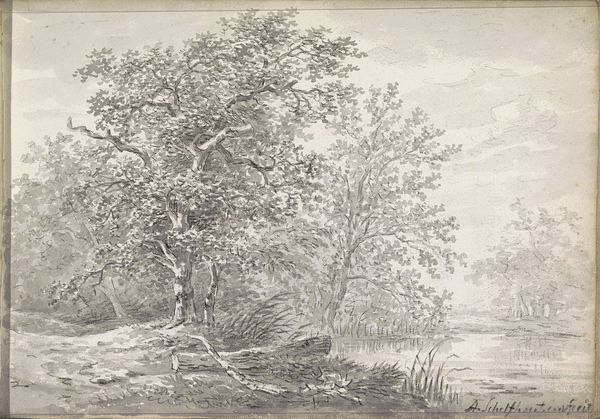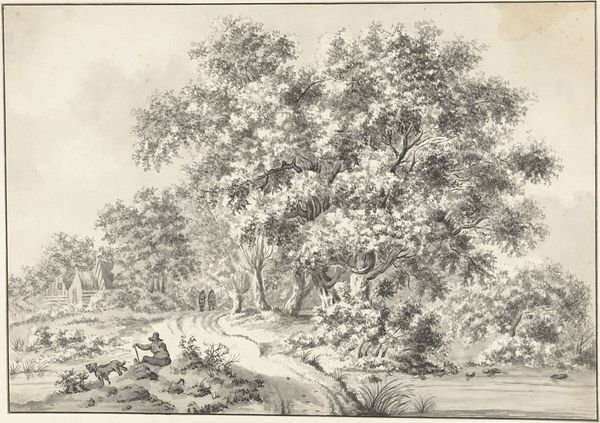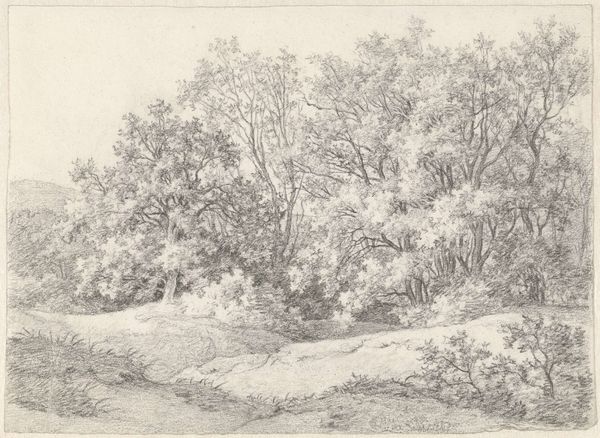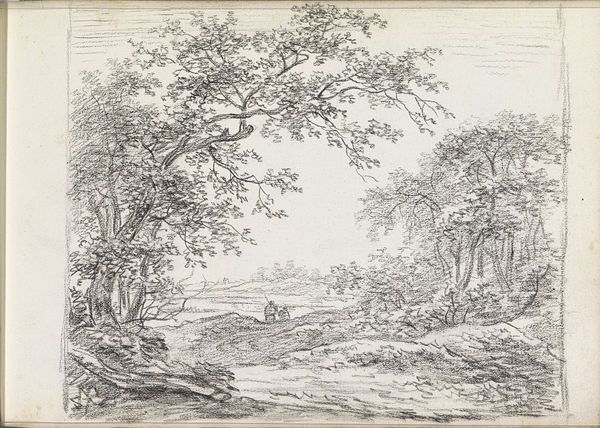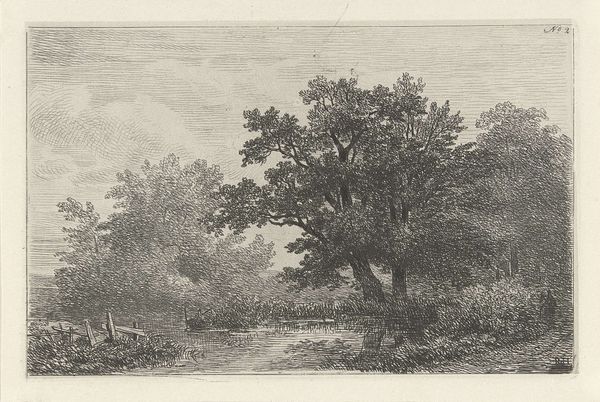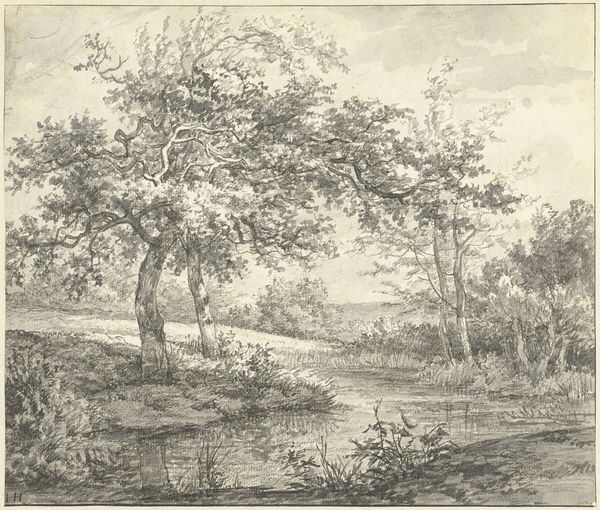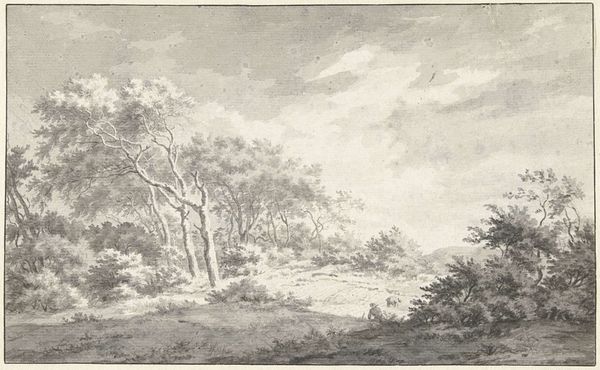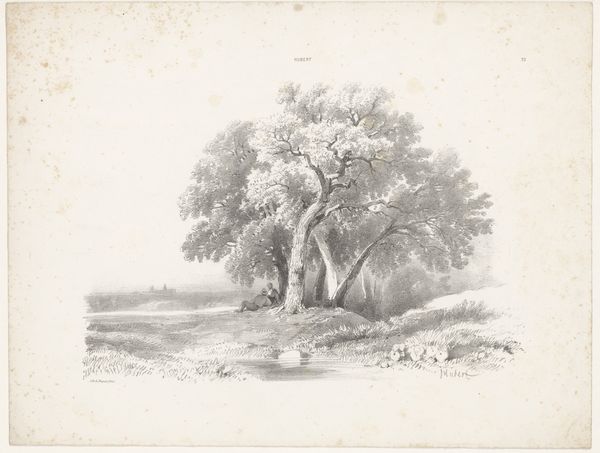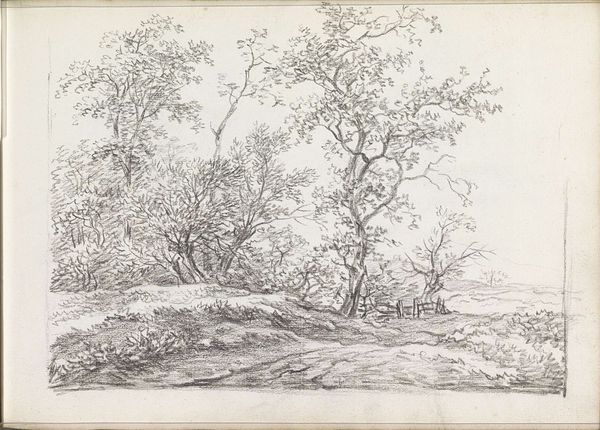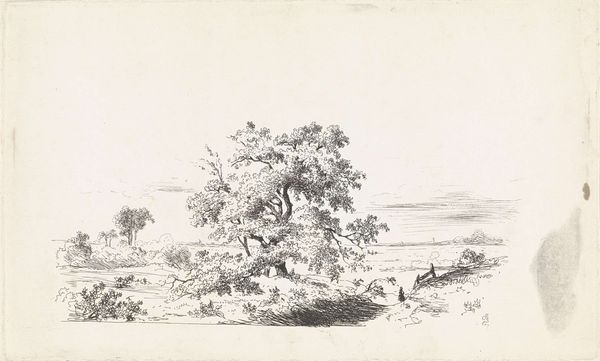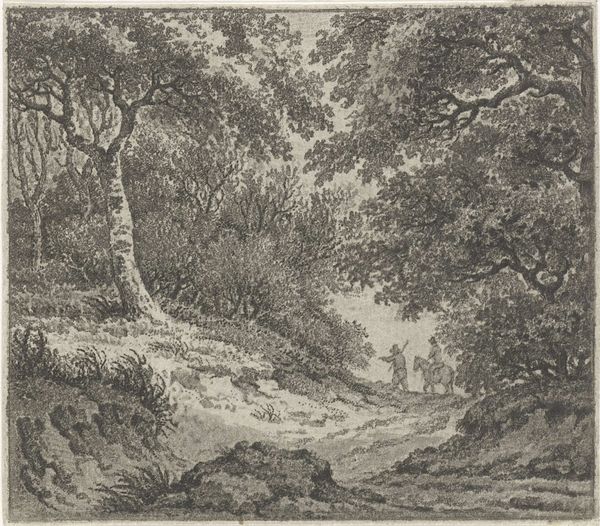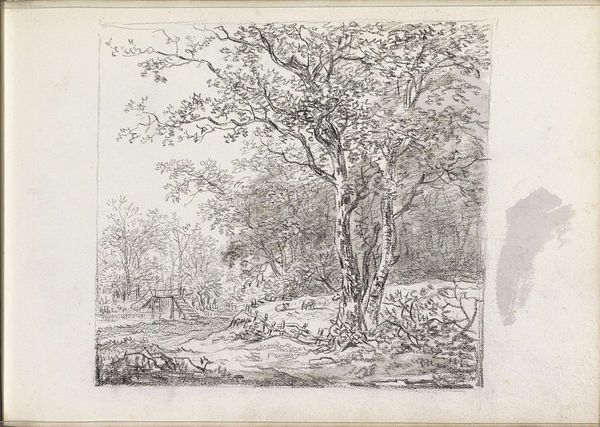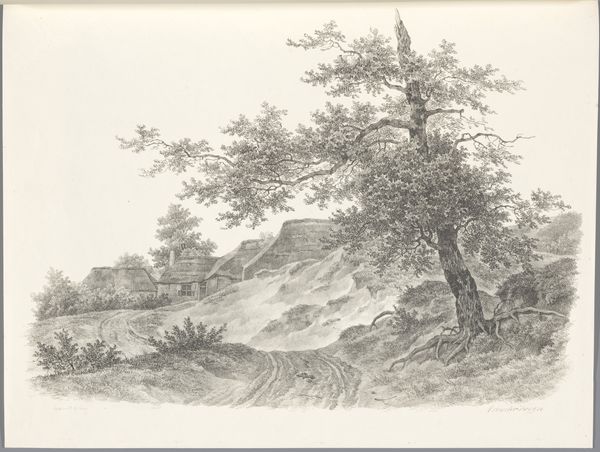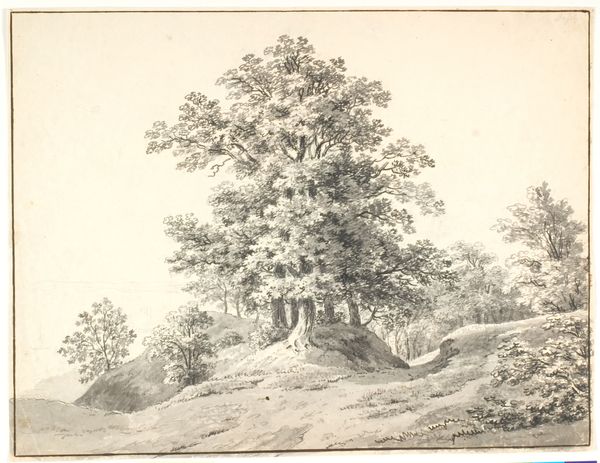
Dimensions: height 232 mm, width 287 mm
Copyright: Rijks Museum: Open Domain
Editor: This is *Landschap bij Alkmaar*, a drawing made with pen, pencil, and ink by Jan Evert Grave, sometime between 1769 and 1805. It feels very calm and ordered, somehow… What do you see in this piece? Curator: The apparent calm is interesting, isn't it? Given the socio-political context, we could view it as a kind of escapism. Late 18th-century Europe was experiencing massive upheaval. What might a detailed landscape drawing like this offer to its viewers, at that specific time? Editor: Escape from reality, maybe? A kind of idealized version of the countryside, far from the revolutions and wars? Curator: Precisely! It also speaks to ideas about the relationship between humanity and nature at the time. Romanticism saw nature as sublime, a place of refuge and spiritual renewal, yet class and labour always underpin such imagery. Who actually had the luxury to contemplate nature in this way? Editor: So it’s showing an ideal, but also maybe obscuring some realities? The shepherd and sheep seem idyllic, but are also a symbol of labour… Curator: Exactly! And consider the act of drawing itself. Why document this particular scene with such detail? Was Grave engaging with Enlightenment ideas about observation and cataloging the natural world? Does this artistic endeavor also intersect with evolving concepts of land ownership and rural social structures? Editor: I hadn’t thought about that – the drawing almost feels like a survey. I guess what appears ‘calm’ is really loaded with other stuff going on in the world. Curator: It almost always is! Even seeming simplicity invites deeper questioning once we consider these contextual layers. Editor: Thanks, that's a really helpful perspective. I'll definitely look at landscapes differently from now on!
Comments
No comments
Be the first to comment and join the conversation on the ultimate creative platform.
